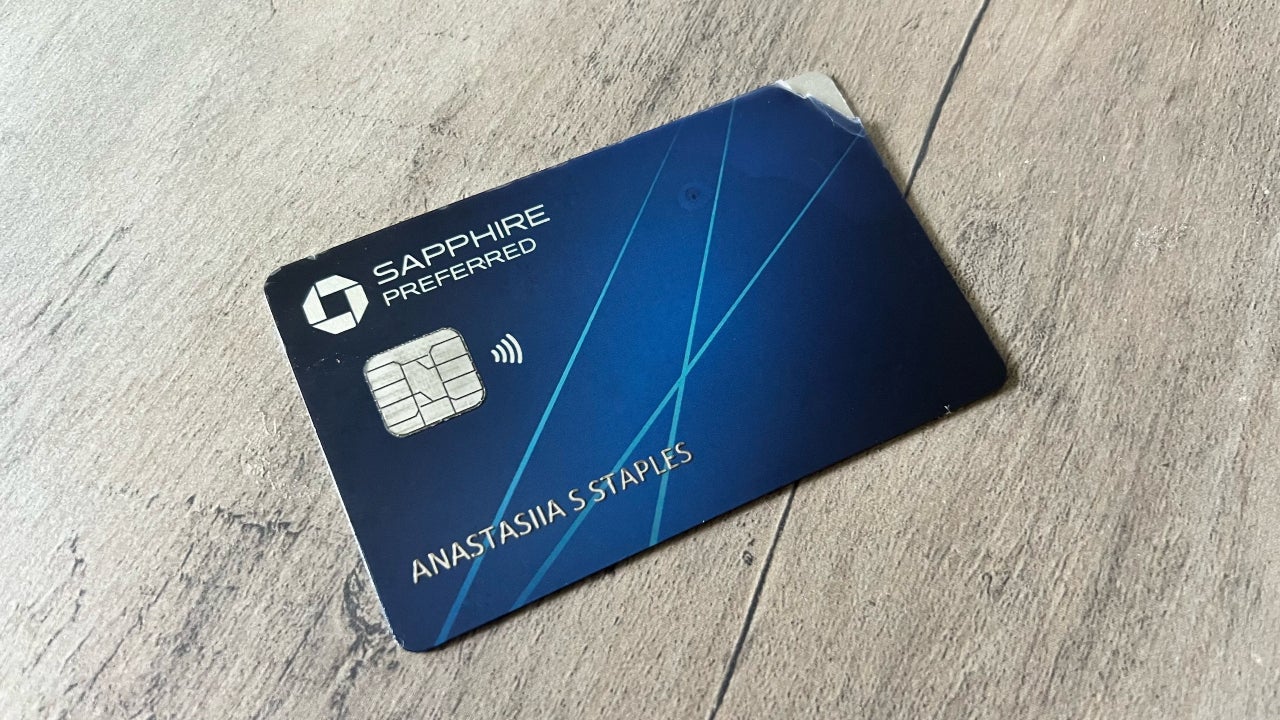The Chase Sapphire Preferred® Card has been a long-time staff favorite at Bankrate. A no-brainer.
The $95 annual fee is comparatively modest, the travel benefits are solid, and valuable transfer partners are plenty. Plus, even if you didn’t use the transfer partners, you could redeem your rewards at a respectable rate of 1.25 cents per point at the issuer’s travel portal — a rare offer on the travel credit card market.
But then things changed. Chase recently announced changes to this staff favorite card – among them: that boosted redemption rate is going away. For some cardholders, that changes the value proposition of this card. For others, it makes little difference.
The news split the cardholders on our team. We’ve been talking constantly about who will keep the card and who will ditch it, and the reasoning could be helpful if you’re navigating this question yourself. If you’re trying to decide whether to keep the Chase Sapphire Preferred (or if it’s still worth applying for), here are some expert arguments that can help you.
How travel portal redemption values are changing
Chase is doing away with the 1.25-cent redemption rate. You’ll now only get 1 cent apiece when booking at the issuer’s travel portal. However, the bank has also introduced Points Boost, which increases the value to up to 1.5 cents on select airlines and hotels and up to 1.75 cents on premium flights with select airlines. These offers are limited and subject to change.
That means that if your desired redemption isn’t included in Points Boost, you have two options: redeem at 1 cent per point at the portal or transfer your rewards to try and secure a higher value.
To see how this works, I signed into Chase Travel and looked at hotel options in Paris in October eligible for Points Boost. Out of 1,195 hotels, 61 came with a Points Boost. Nine were sold out. I found only four offers under $300 per night, with the lowest cash rate of $240. Further, 19 hotels were in the $300-$400 per night range. The remaining 28 hotels were more expensive, including eight that charge over $800 per night.
One of the more than 50 hotels with rates under $200 were not eligible for Points Boost. The same goes for the highly luxurious properties that charge over $1,000 per night.
Then, I looked up round-trip flights from Seattle to Paris for the same dates. Out of 385 flight options, eight were eligible for Points Boost. They included two airlines — United and Air Canada — and a mix of economy and more premium options. None of the non-stop options were eligible.

As you can see, you get a variety of options with Points Boost. Still, they’re very limited. In our example, only 5 percent of hotels and 2 percent of flights were eligible.
For new cardholders, the new rates will apply immediately. But if you applied for the Chase Sapphire Preferred on or before June 22, 2025, the changes won’t kick in right away. You can redeem any points you earn before Oct. 26, 2025, for travel through Chase at a value of at least 1.25 cents per point until Oct. 26, 2027. Those points will be eligible for Points Boost offers as well. This allows you time to evaluate the changes and decide whether you want to keep the card.
The case for keeping the card
Sarah Gage, Bankrate’s credit cards managing editor, will likely keep the card.
“I prefer to book direct and do most of my redemptions via Hyatt transfers, so losing the 1.25X [redemption rate] doesn’t change much for me,” she explains.
World of Hyatt is one of Chase’s most valuable transfer partners. Hyatt points are worth 2.3 cents apiece, according to Bankrate’s valuations. Such a value isn’t easy to come by, so if you’re also a Hyatt loyalist, the Chase Sapphire Preferred might be worth keeping.
Keep in mind that card benefits also provide value you should consider. For instance, the Chase Sapphire Preferred offers at least 12 months of complimentary DashPass (activation required by Dec. 31, 2027). Further, cardholders receive a $10 off discount monthly at checkout on a qualifying non-restaurant order on DoorDash — as long as they’re enrolled in the Sapphire Preferred DashPass membership.
“And as long as the DoorDash credits stick around, they cover the annual fee for me,” Gage says.
The case for canceling the card
The changes can certainly make it harder to get the same value out of the Chase Sapphire Preferred. If you’ve been relying on portal travel redemptions, you might have to find other ways to maximize your points — which isn’t the work every cardholder is willing to put in.
John Puterbaugh, senior editorial director at Bankrate, is leaning toward dropping his Sapphire Preferred.
“I have another airline card with a similar annual fee, but I’m not interested in doing the necessary work to ensure I’m reaping the full value from both these cards in light of the Sapphire changes as I understand them,” he explains.
Puterbaugh’s airline card has a simpler value proposition in terms of redemptions. And with the Chase Sapphire Preferred getting rid of the 1.25-cent-per-point rate, it won’t be able to offer the same simplicity.
“Perhaps I will reconsider and reapply for a Sapphire card again at some point in the future, but for now it just feels more complicated than I’m interested in dealing with,” Puterbaugh says.
I’m also considering downgrading my Sapphire Preferred. It used to be my “hotel card.” I don’t have any brand loyalty (unless we’re talking about Spotify — I’m not giving up 11 years’ worth of playlists), so I liked being able to pick any hotel without worrying about point values. To add to that, I’m opposed to the idea of a credit card telling me where to spend money, be it through statement credits or redemption rates.
To put it simply, flexibility was the card’s main selling point for me. It’s gone now, and I’ll react accordingly.
The case for pondering a little longer
Brooklyn Lowery, credit cards senior editor at Bankrate, carries the Chase Sapphire Preferred, while her husband has the Chase Sapphire Reserve®. What she will do with her card depends on what the couple decides to do with the Sapphire Reserve.
“We need a premium card to continue making point transfers, so we’ll at least keep one or the other,” Lowery says.
The Chase Sapphire Reserve just underwent major changes too. The annual fee shot up from $550 to $795, and the card gained a long list of statement credit benefits. The redemption rates were altered as well. With all of this, whether the card is still worth keeping is a question of its own.
Lowery, however, isn’t worried about portal redemptions.
“I rarely used the 1.25X or 1.5X redemption option anyway,” she says. “The Sapphires are almost exclusively point transfer cards for me.”
If you have other travel cards, consider how the changes impact your overall card strategy. Does the Chase Sapphire Preferred still provide unique value and play a role in that strategy? Or is there a card that can now play it better, saving you $95 in annual fees? These questions can help to guide your course of action.
The bottom line
The Chase Sapphire Preferred can still offer plenty of value to the right cardholder. Its travel benefits are still respectable, and its list of transfer partners hasn’t changed. Whether the new redemption rates make a difference to you depends on how you prefer to use your rewards. The main thing is, you’re now aware of the changes and can make an informed decision.
Why we ask for feedback
Your feedback helps us improve our content and services. It takes less than a minute to
complete.
Your responses are anonymous and will only be used for improving our website.
Help us improve our content
Read the full article here
















